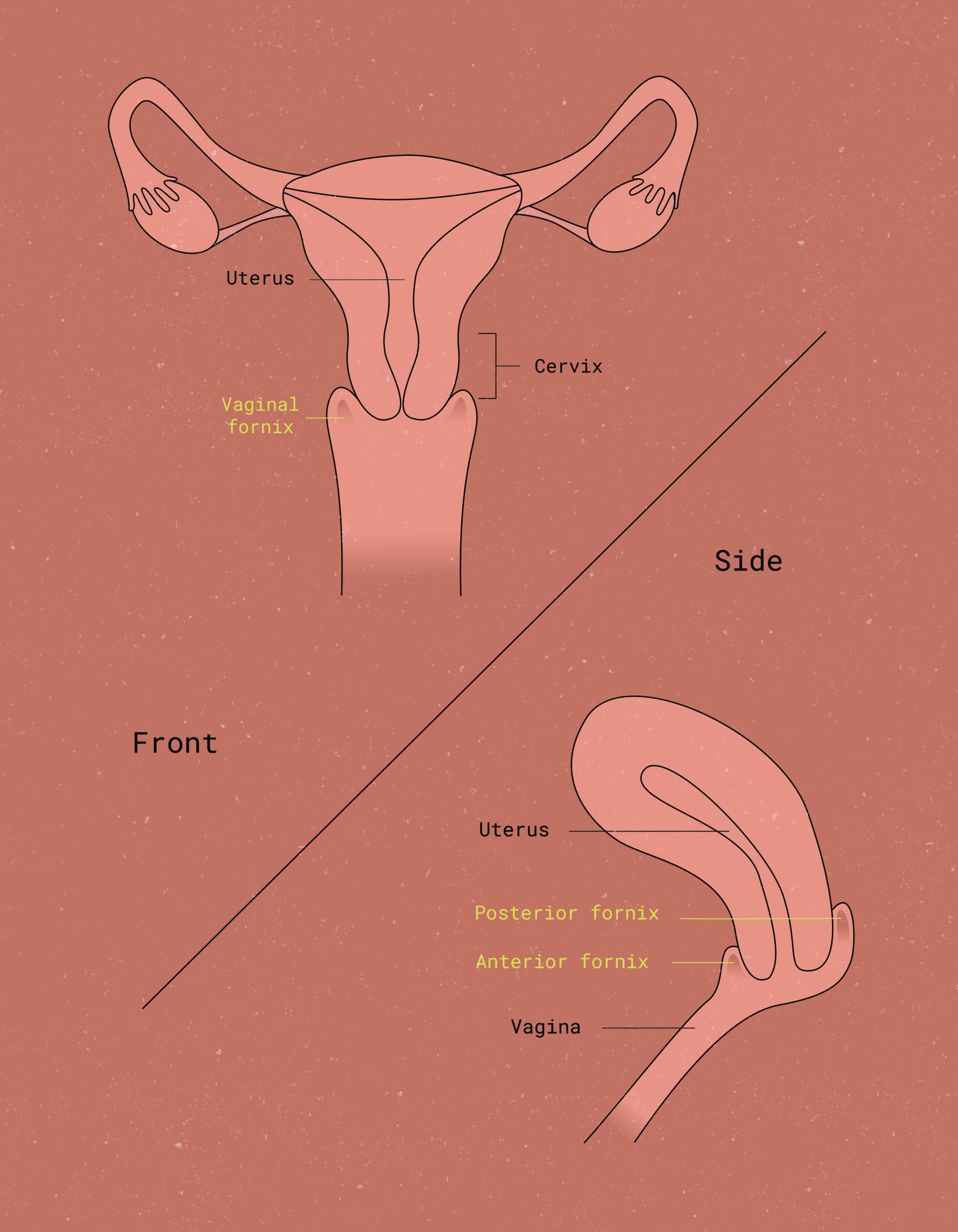Everything you need to know about imperforate, microperforate, and septate hymens
TL/DR: Hymens come in all shapes and sizes. For most, it covers only part of the vaginal opening, becoming more flexible during puberty or eventually rupturing. In rare cases, however, it may cover the entire vaginal opening (called an imperforate hymen). A hymenectomy is a procedure used to correct an imperforate hymen.
A hymen-what-tomy?
If your eyes just glazed over at some of those words, don’t freak out! We had the same reaction while researching this (like, what the heck does imperforate mean?). Let’s back up and pay a visit to our friend, Merriam Webster.
First things first: What is a hymen?
- Definition (1): a fold of mucous membrane partly closing the orifice of the vagina
- Definition (2): the Greek god of marriage1
So, obviously, we’re talking about the first definition (but all about the fun facts – anyone else feel like their middle school curriculum purposefully left out the Greek god of marriage?).
You may have heard in health class that the hymen breaks when you have sex for the first time, right?
Not exactly. Turns out, not all individuals assigned female at birth are born with a hymen.2 And hymens can look totally different from one person to another. In rare cases, however, it can become a more-than-inconvenient medical problem when you get your first period.
Read on to learn more about the mysterious hymen and find out what a hymenectomy is (and when it might be necessary).

Hymen 101: What you need to know
Now that you know what the hymen is, let’s dig into some details. First – and this is important – if you’ve never found any traces of it covering the opening of your vagina, that’s totally normal (more on this below).
On the other hand, if you have a visible hymen that covers part of the vaginal opening, that’s totally normal, too. Most hymens are shaped like the letter “C,” a crescentic shape curving around the bottom edge of the vaginal opening (closest to your backside). Some wrap around the entire opening with one or even two small holes, called perforations – kind of like a paper snowflake. Some have multiple small holes, and some extend further over the vaginal opening than others.
When they cover the entire opening of the vagina, they are called imperforate hymens, and they’re relatively rare, occurring in only about 1 in 2000 individuals assigned female at birth.3 A hymen with a band of extra hymenal tissue running vertically across the opening (creating a second perforation) is called a septate hymen. And then there’s the microperforate hymen, which has only a very small hole, or perforation.4

What’s the point of a hymen? It’s not entirely clear.
Dr. Jen Gunter, author of The Vagina Bible, theorizes that the hymen was at one point “a prepubescent protective barrier for vaginas”, meaning this thin membrane was there to protect the vagina from the many irritants of the outside world. She goes on to explain that while pubic hair, fat pads, estrogen, and labia minora all serve the purpose of protecting the vagina, these don’t develop until puberty. So, the theory goes that the hymen might be there to protect your vagina when you’re very young.
What we do know for sure is that the hymenal membrane is an “embryological remnant” – meaning they originate before birth, during fetal development, when you’re still developing in the womb – and that they come in lots of different shapes and sizes.5
Hymens & sex: Truth or myth
As our bodies grow and puberty begins, the hymen thins and weakens. While it’s often thought that vaginal penetration is the only way to rupture or break it, research has shown that this isn’t necessarily true:
Other physical activities can cause the hymen to rupture, including vigorous sport (like cycling and gymnastics) and accidental falls.5 To add to the confusion, sometimes, when the hymen is torn during childhood, the piece of tissue fully heals and returns to its original appearance.6
According to Dr. Gunter, “The hymen can tear from physical activity,” yet “approximately 50 percent of teens who report sexual activity still have an intact hymen.”7 So, it’s worth noting that your hymen may not necessarily break during penetrative sex. For some, it thins out enough that it doesn’t get in the way of sexual activity and stays intact into adulthood. 5

When is a hymenectomy procedure needed? And how is it performed?
So, what’s a hymenectomy? It’s a surgery performed to address an imperforate or micro perforate hymen, either to remove it completely or create an opening so that vaginal fluids and menstrual blood can exit the body normally. The procedure is considered a minor surgery, and it also typically involves the removal of any menstrual period blood that’s been trapped in the vagina or uterus.8
What are the symptoms of an imperforate hymen? It’s usually not noticeable until you reach puberty. In most cases, there are no symptoms until the time of menarche (this is when menstruation begins, but since the blood is trapped, it’s not obvious that it has begun). If you’ve experienced all the other physical signs of puberty – such as breast development, armpit hair, and pubic hair – but haven’t gotten your first period, your doctor or ob/gyn may perform a physical examination (a visual exam of the vulva or a pelvic exam) to rule out an imperforate hymen.3
Other common warning signs include stomach pain, lower back pain or discomfort, acute urinary retention (when it’s hard or impossible to pee), and PMS-like symptoms such as breast soreness or tenderness.3 If you’re noticing any of these symptoms and you’re still waiting on your first period, seek medical care. Talk to your parent or guardian and ask to schedule a doctor’s appointment. It may sound scary, but an imperforate hymen is easy to treat!
Once your gynecologist diagnoses an imperforate (or microperforate) hymen, the next step is to find out its thickness, usually via MRI imaging. A thicker hymen requires “surgical resection”, which is a fancy way of saying “surgery to completely remove the hymen.” If the hymen is thin, the hymenectomy only entails a surgical technique called “vertical incision,” or a simple surgical cut.9

A hymenectomy is a quick procedure: it’s over in a matter of minutes. Before the surgery, you’ll receive a local anesthesia to numb the area (so, don’t worry – you won’t feel anything!). If you have anxiety, your doctor may also be able to prescribe oral medication to help you stay relaxed before and during the surgery.10
As soon as the hymenectomy is complete, your doctor will apply sutures to prevent bleeding and send you home with a topical cream or ointment to apply for the next few days. The recovery and healing time is minimal. Most patients avoid strenuous activity for only a couple of days before going back to their normal activities. Any absorbable stitches will dissolve on their own; however, tampons, menstrual cups, menstrual discs, and vaginal intercourse should be avoided by the patient for at least two weeks.10
How does a hymenectomy impact sexual health and experiences?
A hymenectomy can improve sexual health by removing excess hymenal tissue that may be causing discomfort or pain during intercourse. It can also address medical conditions like imperforate hymen, allowing for a more comfortable and fulfilling sexual experience post-surgery.
Hymenectomy: More than a winning scrabble word
If you made it through puberty, regularly have a period, and don’t have pain during sexual intercourse, your hymen is probably long gone. Even if you’ve never had penetrative sex, you may not have a hymen – or you could be sexually active with a hymen that’s fully intact but isn’t getting in the way. Either way, it’s all good.
Complications only occur when hymen abnormalities cover enough of the vaginal opening that fluids – like cervical secretions, vaginal discharge and menstrual blood – have a hard time exiting your body. Make sure to talk to your healthcare provider (or a parent or guardian) if you still aren’t getting your period despite having experienced all the other signs of puberty. Make sure to mention if you’re noticing the onset of painful symptoms such as lower back pain, abdominal or pelvic pain, or other PMS-like symptoms minus the actual bleeding.
If you have an imperforate hymen diagnosed, don’t stress! A hymenectomy is a quick, straightforward minor surgical procedure that removes the extra tissue. This procedure has short recovery time. Talk to your health care provider for more information.
Have questions about using Flex® after a hymenectomy? Email us at hello@flexfits.com.
This article is informational only and is not offered as medical advice, nor does it substitute for a consultation with your physician. If you have any gynecological/medical concerns or conditions, please consult your physician.
© 2025 The Flex Company. All Rights Reserved.
- Definition of HYMEN. (n.d.). Merriam-Webster. Retrieved from merriam-webster.com/dictionary/hymen[↩]
- Developmental disorders of the female genital tract. (2020, November 3). National Library of Medicine: Medline Plus. Retrieved from medlineplus.gov/ency/article/001497.htm[↩]
- Lardenoije, C. (2009, January 1). Reminder of important clinical lesson: Imperforate hymen: a cause of abdominal pain in female adolescents. PubMed Central (PMC). Retrieved from ncbi.nlm.nih.gov/pmc/articles/PMC3029536/[↩][↩][↩]
- Congenital Anomalies of the Hymen. (n.d.). Brigham and Women’s Hospital. Retrieved from brighamandwomens.org/obgyn/infertility-reproductive-surgery/congenital-anomalies/hymen-anomalies[↩]
- Al-Rukban, M. O., & Hegazy, A. A. (2012). Hymen: facts and conceptions. theHealth, 3(4), 109-115. https://www.academia.edu/download/33194501/a._Hymen_facts_and_conceptions.pdf[↩][↩][↩]
- Smith, A. (2011). The prepubertal hymen. Australian Family Physician, 40(11), 873-875. https://www.racgp.org.au/download/documents/AFP/2011/November/201111asmith.pdf[↩]
- Gunter, J. (2019). The Vagina Bible. Citadel Press.[↩]
- Acien, P., & Acien, M. (2021, January 1). Presentation and management of complex female genital malformations. OUP Academic. Retrieved from academic.oup.com/humupd/article/22/1/48/2457890[↩]
- Laghzaoui, O. (2016, April 20). Congenital imperforate hymen. BMJ Case Reports. Retrieved from casereports.bmj.com/content/casereports/2016/bcr-2016-215124.full.pdf[↩]
- Hymenectomy. (2020, November 9). Nationwide Children’s Hospital. Retrieved from nationwidechildrens.org/family-resources-education/health-wellness-and-safety-resources/helping-hands/hymenectomy[↩][↩]








